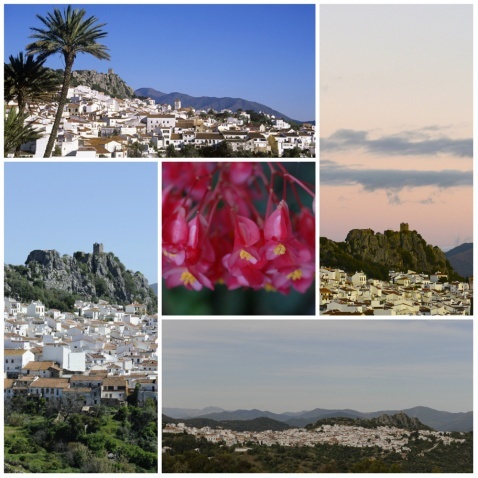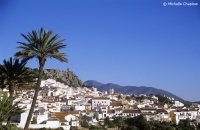
Gaucin has a fascinating, if not tumultuous history |
|
History of Gaucin
The town's magnificent castle, now called Castillo del Aguila (Eagle's Castle), dates from Roman times, although earlier Iberian ceramics have been found in its water tank. The castle was expanded by the Visigoths and then further extended by the Arabs into a fortress, after the Moors invaded in 714.
The name of the castle "Zajra Guazan" is a combination of an indigenous term "Zajra" for rock and the Arabic "Guazan" for strong. The present village name was a shortening of these words.
The date of an initial construction is unknown but it is assumed to be early in the Moorish period as this area was affected by the Berber and Mozárab rebellions.
Andalucian Villa with gorgeous pool and sea views close to Gaucin village. Boasting an impressive outdoor space, glass terrace, and never-ending views – this 3-bed villa is a great choice for friends and families. Conveninet for Gaucin village or the hiistoric town of Ronda. Sleeps 6.
Selected, approved Gaucin villas and village houses. Traditional, comfortable, quality accommodation from Andalucia specialists Rustical Travel.
The village was first recorded in the Al Muqtabis, a chronicle of the Moorish conquest of Al-Andaluz by Cordoban historian Ibn Hayyan, as the vantage point from where the Caliphate's troops were observed burning the ships of rebel leader Umar ibn Hafsun in 914AD.
In the 11th century the castle was surrounded in the battles between the Moorish kingdoms or Taifas until the arrival of the Almorávides. In the Nazarí period, the castle was at the frontier of the Christian reconquest.
Don Alonso Perez de Guzmán, the famed Guzman el Bueno, died fighting the Moors here in 1309 AD, having helped Fernando IV of Castile to capture Gibraltar.
Gaucin was finally liberated from the Moors in 1457 by Enrique IV. The reconquest in the area was completed in 1483 with the securing of 38 towns including Ronda. This establish a defensive curtain for the Christians to protect and control the coast against incursions from Moorish pirates.
The castle was passed to the Duke of Medina Sidonia, Guzman El Bueno's descendant, who appointed local mayors. It was the seat of several Moorish rebellions in the 15th and 16th centuries, when priests and soldiers were killed.
In 1704 the British took Gibraltar, and Gaucin became a popular summer destination, as a hill town where they could escape the summer heat.
The castle was further enlarged and fortified and in 1719 the chapel was built inside.
The castle was used as a stronghold against the French in the Wars of Independence, protecting the villagers; mountain guerillas held out against Napoleon's soldiers, but succumbed in 1810; the convent was ransacked and many houses destroyed.
During the 19th century, the village was known as a haven for brandy and tobacco smugglers who travelled through the surrounding hills along the 'smugglers' route' from Gibraltar to Ronda. See Bandoleros
Later, during the Carlist civil wars, the castle was repaired and refortified. Gaucin was known for its heroic stand-off by liberal forces in November 1836 against General Miguel Gomez, who was marching from Ronda to Algegiras.
The castle underwent further repairs in 1842, and a new barracks was established to accommodate 40 men and six gun positions. The present look of the castle and the outer walls date from this period. In 1848 a large ammunition explosion badly damaged the ancient building and its military role ceased. In 1927 the now-uninhabited castle passed to the church, thanks to the Ermita de Santo Niño which is located inside. Restoration work was carried out between 1989 and 1991.
If you found this article interesting and fancy a visit, this is how you get to Gaucin

